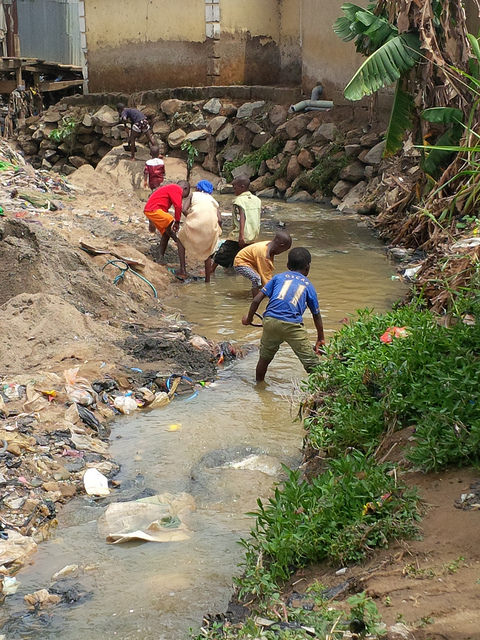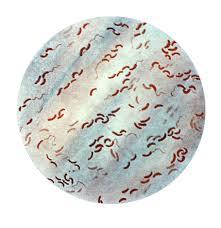The news of the cholera epidemic in Yemen is beyond comprehension. The disease is spreading with unprecedented speed. There are over 600,000 people infected and 2,000 dead - in about six months time.
In July, the numbers being reported were a staggering 5,000 new cases a day. Although the overall rate of newly infected has slowed recently, down to around 3,000 cases per day - that is certainly no reason for celebration. This still remains the most explosive cholera epidemic on record.
How does a bacterium that is micrometers long cause such devastation?
Vibrio cholerae naturally exists in two places - water and the human small intestine. The bacteria sets up an infection in someone after they consume water contaminated with Vibrio cholerae. This is more common in areas where sanitation is low and people are forced to resort to drinking the same water that they or others are bathing in. An example of such a situation is shown in the photo below.

When the bacteria are swallowed, they pass through the stomach until they reach the small intestine. It is here, and only here, where the bacteria adhere to the intestinal lining. Upon sticking to the intestinal cells, the bacteria do two things: replicate (or make more of themselves) and release a toxin called cholera toxin (CTX).
CTX is what causes damage to the body - the bacteria are nothing more than the delivery system. When cholera toxin is made, it leaves the bacterial cell and binds to an intestinal cell. Once bound, it then enters into the intestinal cell where it interacts with certain proteins in the cell and interferes with the normal signaling. The end result is the opening of channels in the cell and the release of water - out of the cell and into the intestine. This is where the telltale sign of cholera - large volumes of diarrhea - comes from. But, the diarrhea is not like diarrhea that we may be familiar with. It is referred to as "rice water stool" because it has the appearance of the water that is leftover in the pot after rice is cooked.
This infection causes two major problems that need to be dealt with. The first is that the infected person loses large volumes of water extremely quickly. In fact, people can shed liters of stool in a very short amount of time which can result in death in a matter of hours. This is why rehydration therapy (saline through an IV) is required very quickly.
The second problem is that the rice water stool contains large amounts of infectious Vibrio cholerae which is not easy to treat nor dispose of. Remember, there can be liters of it in a matter of hours. It is not uncommon for the buckets of stool to get tossed into the only place that is around - the nearest river or body of water. This only increases the infectious bacteria at the source serving as a guarantee that this cycle will continue.
All that is needed to stop the infectious cycle is clean drinking water and the ability to rehydrate someone who is infected. Unfortunately, Yemen has neither of these and they are not getting the aid they need. So, it is easy to see how this tiny bacterium can take over in a place that is in a tragic situation. It is not so easy to see, however, how we are sitting back and watching it happen.
For more on the crisis in Yemen, please see Cholera in Yemen Rages On and Yemen May Collapse Under Cholera Outbreak




